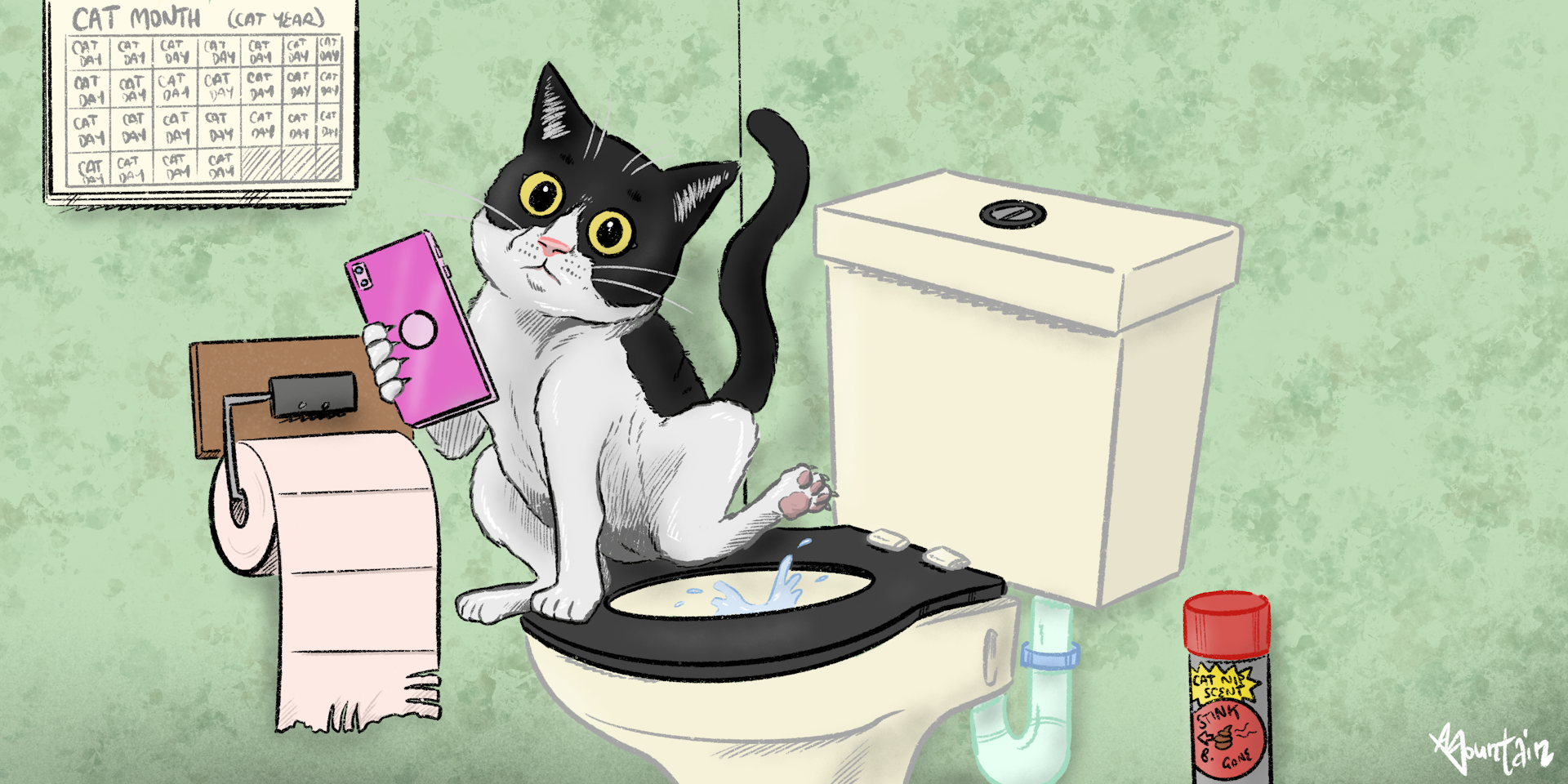How Flushing Animal Waste Should be Not Advisable
How Flushing Animal Waste Should be Not Advisable
Blog Article
Just about every person will have their own individual conception about Why you should never flush dog poop down the toilet.

When it concerns getting rid of waste, especially animal waste, many people usually consider the practical option of flushing it down the bathroom. However, this seemingly easy solution can have severe consequences for the setting and public health. In this short article, we'll discover why flushing pet waste down the bathroom is a bad idea and offer alternate techniques for appropriate disposal.
Introduction
Proper garbage disposal is critical for preserving ecological sustainability and public health. While it may seem harmless to flush animal waste down the bathroom, it can cause different problems, both for the setting and human wellness.
Risks of flushing animal waste
Ecological effect
Flushing animal waste presents unsafe germs and virus into rivers, which can negatively impact water environments. These virus can pollute water resources and damage aquatic life, disrupting delicate communities.
Public health concerns
Pet waste includes damaging germs such as E. coli and Salmonella, which can position significant health and wellness dangers to people. Purging pet waste down the bathroom can pollute water materials, bring about the spread of conditions and infections.
Alternatives to flushing
As opposed to flushing pet waste down the bathroom, there are numerous alternate disposal approaches that are a lot more environmentally friendly and hygienic.
Composting
Composting animal waste is an environmentally friendly means to take care of it. By composting, raw material is broken down right into nutrient-rich soil, which can be made use of to fertilize gardens and plants.
Landfill disposal
Disposing of animal waste in a landfill is one more option. While not as eco-friendly as composting, it is a safer option to flushing, as it avoids the contamination of water resources.
Pet dog garbage disposal systems
There are specialized pet dog waste disposal systems offered that securely and hygienically dispose of pet waste. These systems often use enzymes to break down waste and remove odors.
Actions to proper animal waste disposal
To ensure appropriate disposal of pet waste, comply with these actions:
Scooping and nabbing waste
Routinely scoop and bag animal waste utilizing eco-friendly bags. This protects against waste from polluting the atmosphere.
Using marked waste bins
Dispose of bagged pet waste in marked waste containers, such as garden compost containers or land fill bins. Stay clear of flushing it down the bathroom in all prices.
Cleansing litter boxes and pet locations routinely
Routinely tidy can and animal areas to avoid the accumulation of waste and microorganisms. Use pet-safe cleaning items to keep health.
Advantages of correct disposal techniques
Taking on proper disposal techniques for animal waste provides several benefits:
Minimized environmental pollution
Appropriate disposal techniques decrease the threat of environmental pollution, protecting waterways and ecological communities from contamination
Reduced danger of water contamination.
By preventing flushing pet waste down the commode, the danger of water contamination is significantly lowered, safeguarding public health.
Boosted sanitation and hygiene
Appropriate disposal approaches advertise far better hygiene and health, creating a more secure environment for both humans and animals.
Final thought
To conclude, purging pet waste down the bathroom is dangerous to the environment and public health. By adopting alternative disposal approaches and following correct waste administration methods, we can reduce the adverse effect of animal waste and contribute to a cleaner, much healthier planet.
What To Do With Dog Poo – The Do's And Don'ts Of Disposing Of Faeces
Dog poo bins
Some councils provide dedicated dog waste bins in popular dog-walking areas that can take dog poo that has been bagged but you can legally dispose of dog waste in any public litter bin, as long as it is securely bagged. This also applies to your wheelie bin at home.
Do not flush
Water companies do not recommend flushing dog faeces down the toilet because certain parasites can survive the water processing treatment and are potentially harmful to humans. You should also never consider flushing dog poo that has been bagged down the toilet as the bags will not break down and instead create severe blockages in the sewage system.
In the woods
The Forestry Commission promotes a ‘stick and flick’ method for dealing with waste in the woods. This means finding a stick and using it to flick any poo from off the path so that it is out of the way of other walkers. You could also bury it as long as it is not in an area where there might be livestock.
Livestock
Parasites found in dog poo can be transmitted to livestock if they inadvertently eat infected faeces that has been left on grazing land. This could result in the death of sheep or abortion in cattle so you should always make sure you pick up your dog’s waste in fields where livestock could be present.

Routinely tidy can and animal areas to avoid the accumulation of waste and microorganisms. Use pet-safe cleaning items to keep health.
Advantages of correct disposal techniques
Taking on proper disposal techniques for animal waste provides several benefits:
Minimized environmental pollution
Appropriate disposal techniques decrease the threat of environmental pollution, protecting waterways and ecological communities from contamination
Reduced danger of water contamination.
By preventing flushing pet waste down the commode, the danger of water contamination is significantly lowered, safeguarding public health.
Boosted sanitation and hygiene
Appropriate disposal approaches advertise far better hygiene and health, creating a more secure environment for both humans and animals.
Final thought
To conclude, purging pet waste down the bathroom is dangerous to the environment and public health. By adopting alternative disposal approaches and following correct waste administration methods, we can reduce the adverse effect of animal waste and contribute to a cleaner, much healthier planet.
What To Do With Dog Poo – The Do's And Don'ts Of Disposing Of Faeces
Dog poo bins
Some councils provide dedicated dog waste bins in popular dog-walking areas that can take dog poo that has been bagged but you can legally dispose of dog waste in any public litter bin, as long as it is securely bagged. This also applies to your wheelie bin at home.
Do not flush
Water companies do not recommend flushing dog faeces down the toilet because certain parasites can survive the water processing treatment and are potentially harmful to humans. You should also never consider flushing dog poo that has been bagged down the toilet as the bags will not break down and instead create severe blockages in the sewage system.
In the woods
The Forestry Commission promotes a ‘stick and flick’ method for dealing with waste in the woods. This means finding a stick and using it to flick any poo from off the path so that it is out of the way of other walkers. You could also bury it as long as it is not in an area where there might be livestock.
Livestock
Parasites found in dog poo can be transmitted to livestock if they inadvertently eat infected faeces that has been left on grazing land. This could result in the death of sheep or abortion in cattle so you should always make sure you pick up your dog’s waste in fields where livestock could be present.

We had been brought to that report about Can You Flush Dog and Cat Poo Down the Toilet? through a buddy on a different website. Sharing is nice. Helping people is fun. I love reading our article about Should you flush animal waste down the toilet.
Click Here Report this page